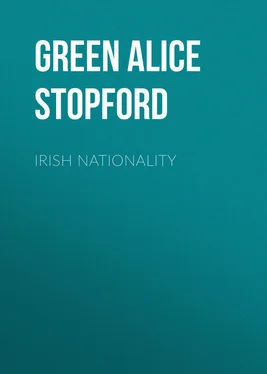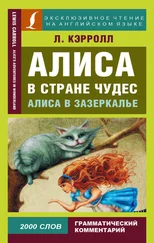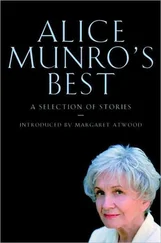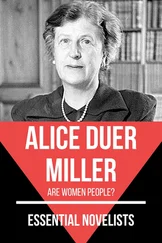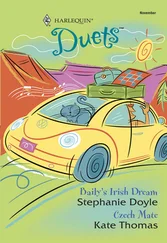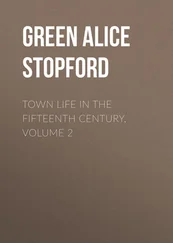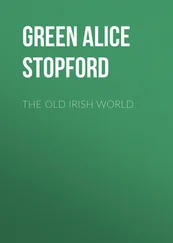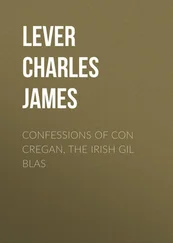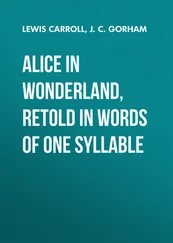Alice Green - Irish Nationality
Здесь есть возможность читать онлайн «Alice Green - Irish Nationality» — ознакомительный отрывок электронной книги совершенно бесплатно, а после прочтения отрывка купить полную версию. В некоторых случаях можно слушать аудио, скачать через торрент в формате fb2 и присутствует краткое содержание. Жанр: literature_20, foreign_antique, foreign_prose, Историческая проза, на английском языке. Описание произведения, (предисловие) а так же отзывы посетителей доступны на портале библиотеки ЛибКат.
- Название:Irish Nationality
- Автор:
- Жанр:
- Год:неизвестен
- ISBN:нет данных
- Рейтинг книги:5 / 5. Голосов: 1
-
Избранное:Добавить в избранное
- Отзывы:
-
Ваша оценка:
- 100
- 1
- 2
- 3
- 4
- 5
Irish Nationality: краткое содержание, описание и аннотация
Предлагаем к чтению аннотацию, описание, краткое содержание или предисловие (зависит от того, что написал сам автор книги «Irish Nationality»). Если вы не нашли необходимую информацию о книге — напишите в комментариях, мы постараемся отыскать её.
Irish Nationality — читать онлайн ознакомительный отрывок
Ниже представлен текст книги, разбитый по страницам. Система сохранения места последней прочитанной страницы, позволяет с удобством читать онлайн бесплатно книгу «Irish Nationality», без необходимости каждый раз заново искать на чём Вы остановились. Поставьте закладку, и сможете в любой момент перейти на страницу, на которой закончили чтение.
Интервал:
Закладка:
But while the Irish drew to themselves from the Empire art, learning, religion, they never adopted anything of Roman methods of government in church or state. The Roman centralized authority was opposed to their whole habit of thought and genius. They made, therefore, no change in their tribal administration. As early as the second century Irishmen had learned from Gaulish landowners to divide land into estates marked out with pillar-stones which could be bought and sold, and by 700 A.D. the country was scored with fences, and farms were freely bequeathed by will. But these estates seem still to have been administered according to the common law of the tribe, and not to have followed the methods of Roman proprietors throughout the Empire. In the same way the foreign learning brought into Ireland was taught through the tribal system of schools. Lay schools formed by the Druids in old time went on as before, where students of law and history and poetry grouped their huts round the dwelling of a famous teacher, and the poor among them begged their bread in the neighbourhood. The monasteries in like manner gathered their scholars within the "rath" or earthen entrenchment, and taught them Latin, canon law, and divinity. Monastic and lay schools went on side by side, as heirs together of the national tradition and language. The most venerable saints, the highest ecclesiastics, were revered also as guardians of Irish history and law, who wrote in Irish the national tales as competent scribes and not mere copyists – men who knew all the traditions, used various sources, and shaped their story with the independence of learning. No parallel can be found in any other country to the writing down of national epics in their pagan form many centuries after the country had become Christian. In the same way European culture was not allowed to suppress the national language; clerics as well as laymen preserved the native tongue in worship and in hymns, as at Clonmacnois where the praises of St. Columcille were sung, "some in Latin, which was beguiling, some in Irish, fair the tale"; and in its famous cemetery, where kings and scholars and pilgrims of all Ireland came to lie, there is but one Latin inscription among over two hundred inscribed grave slabs that have been saved from the many lost.
Like the learning and the art, the new worship was adapted to tribal custom. Round the little monastic church gathered a group of huts with a common refectory, the whole protected by a great rampart of earth. The plan was familiar to all the Irish; every chief's house had such a fence, and every bardic school had its circle of thatched cells where the scholars spent years in study and meditation. Monastic "families" which branched off from the first house were grouped under the name of the original founder, in free federal union like that of the clans. As no land could be wholly alienated from the tribe, territory given to the monastery was not exempted from the common law; it was ruled by abbots elected, like kings and judges of the tribe, out of the house which under tribal law had the right of succession; and the monks in some cases had to pay the tribal dues for the land and send out fighting men for the hosting.
Never was a church so truly national. The words used by the common people were steeped in its imagery. In their dedications the Irish took no names of foreign saints, but of their own holy men. St. Bridgit became the "Mary of the Gael." There was scarcely a boundary felt between the divine country and the earthly, so entirely was the spiritual life commingled with the national. A legend told that St. Colman one day saw his monks reaping the wheat sorrowfully; it was the day of the celebration of Telltown fair, the yearly assembly of all Ireland before the high-king: he prayed, and angels came to him at once from heaven and performed three races for the toiling monks after the manner of the national feast.
The religion which thus sprang out of the heart of a people and penetrated every part of their national life, shone with a radiant spiritual fervour. The prayers and hymns that survive from the early church are inspired by an exalted devotion, a profound and original piety, which won the veneration of every people who came into touch with the people of Ireland. On mountain cliffs, in valleys, by the water-side, on secluded islands, lie ruins of their churches and oratories, small in size though made by masons who could fit and dovetail into one another great stones from ten to seventeen feet in length; the little buildings preserved for centuries some ancient tradition of apostolic measurements, and in their narrow and austere dimensions, and their intimate solemnity, were fitted to the tribal communities and to their unworldly and spiritual worship. An old song tells of a saint building, with a wet cloak about him —
"Hand on a stone, hand lifted up,
Knee bent to set a rock,
Eyes shedding tears, other lamentation,
And mouth praying."
Piety did not always vanquish the passions of a turbulent age. There were local quarrels and battles. In some hot temporal controversy, in some passionate religious rivalry, a monastic "rath" may have fallen back to its original use as a fort. Plunderers fell on a trading centre like Clonmacnois, where goods landed from the Shannon for transport across country offered a prize. Such things have been known in other lands. But it is evident that disturbances were not universal or continuous. The extraordinary work of learning carried out in the monastic lands, the sanctuary given in them for hundreds of years to innumerable scholars not of Ireland alone, shows the large peace that must have prevailed on their territories.
The national tradition of monastic and lay schools preserved to Erin what was lost in the rest of Europe, a learned class of laymen. Culture was as frequent and honourable in the Irish chief or warrior as in the cleric. Gaiety and wit were prized. Oral tradition told for many centuries of a certain merryman long ago, and yet he was a Christian, who could make all men he ever saw laugh however sad they were, so that even his skull on a high stone in the churchyard brought mirth to sorrowful souls.
We must remember, too, that by the Irish system certain forms of hostility were absolutely shut out. There is not a single instance in Irish history of the conflicts between a monastery and its lay dependents which were so frequent on the continent and in England – as, for example, at St. Albans, where the monks paved their church with the querns of the townsfolk to compel them to bring their corn to the abbey mill. Again, the broad tolerance of the church in Ireland never allowed any persecution for religion's sake, and thus shut the door on the worst form of human cruelty. At the invasion of the Normans a Norman bishop mocked to the archbishop of Cashel at the imperfection of a church like the Irish which could boast of no martyr. "The Irish," answered the archbishop, "have never been accustomed to stretch forth their hands against the saints of God, but now a people is come into this country that is accustomed and knows how to make martyrs. Now Ireland too will have martyrs." Finally, the Irish church never became, as in other lands, the servant, the ally, or the master of the state. It was the companion of the people, the heart of the nation. To its honour it never served as the instrument of political dominion, and it never was degraded from first to last by a war of religion.
The free tribes of Ireland had therefore by some native instinct of democratic life rejected for their country the organisation of the Roman state, and had only taken the highest forms of its art, learning, and religion, to enrich their ancient law and tradition: and through their own forms of social life they had made this culture universal among the people, and national. Such was the spectacle of liberty which the imperial Agricola had feared.
Читать дальшеИнтервал:
Закладка:
Похожие книги на «Irish Nationality»
Представляем Вашему вниманию похожие книги на «Irish Nationality» списком для выбора. Мы отобрали схожую по названию и смыслу литературу в надежде предоставить читателям больше вариантов отыскать новые, интересные, ещё непрочитанные произведения.
Обсуждение, отзывы о книге «Irish Nationality» и просто собственные мнения читателей. Оставьте ваши комментарии, напишите, что Вы думаете о произведении, его смысле или главных героях. Укажите что конкретно понравилось, а что нет, и почему Вы так считаете.
